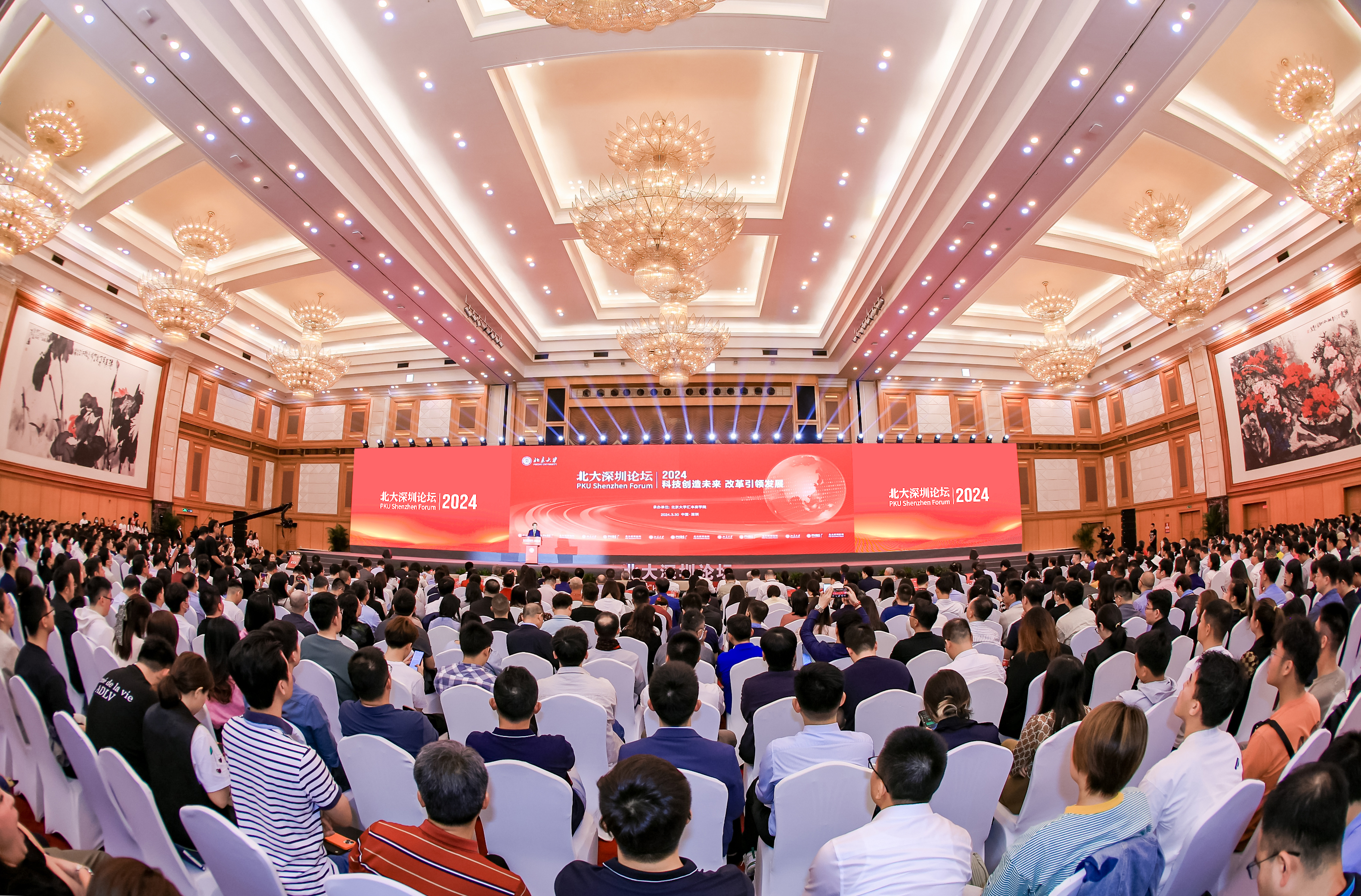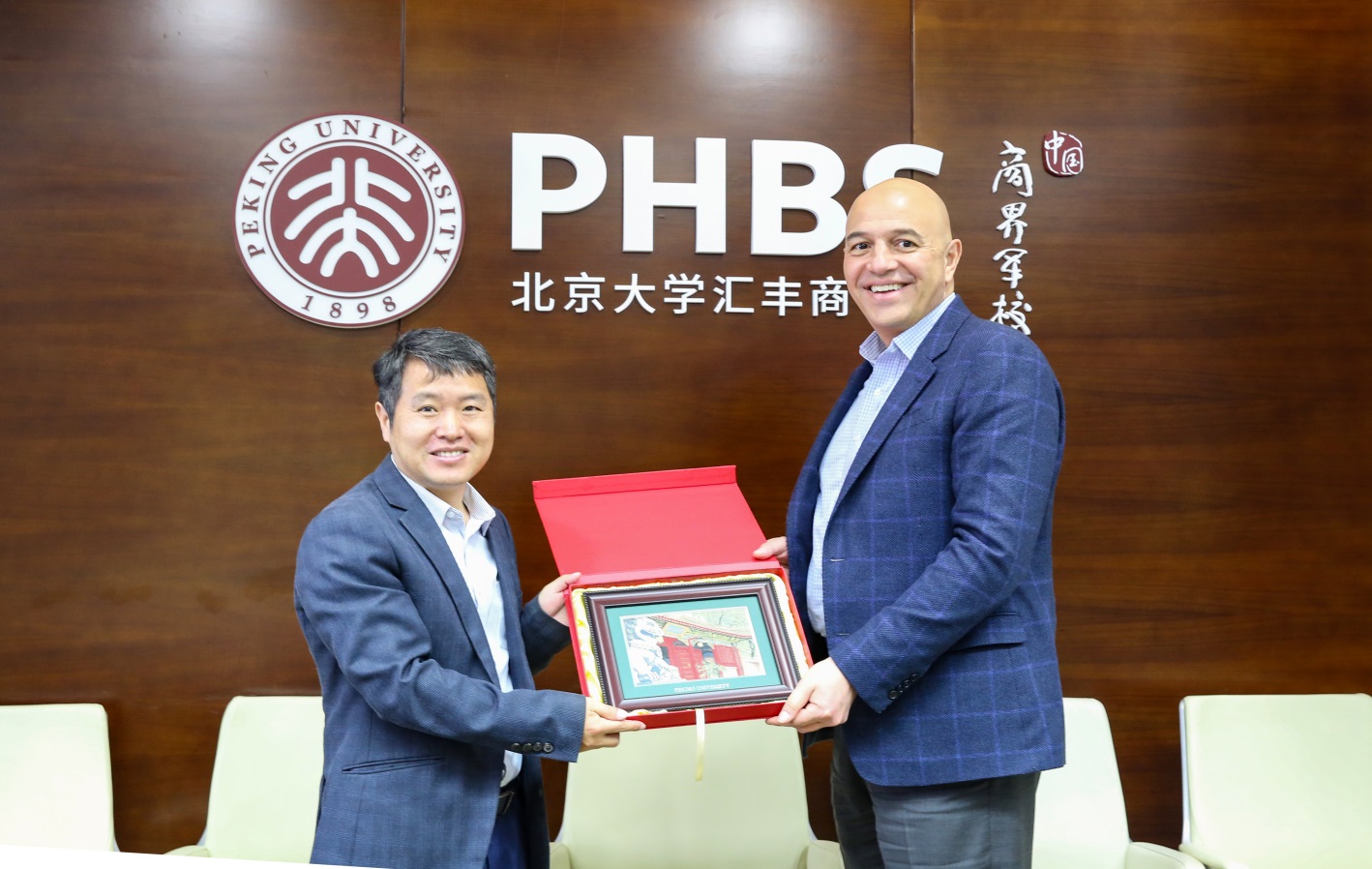Translated by: Zhang Tianhong 14', Zheng Yuxin 14', Deng Lu 14'
This article was translated from a previously published story. It was published by The Time Weekly, a Chinese newspaper in Guangzhou.
On September 24, Zhu Qingshi then president of South University of Science and Technology of China gave his fourth speech for freshmen in at the university in Shenzhen. It was his last time speech before he stepped down as president. Zhu was so popular that everyone crowed around him to get his autograph when he walked into the lecture hall.
During the last five years, South University of Science and Technology of China has been in the public eye because of its courage to depart from the traditional education system.
Actually, the appearance of South University of Science and Technology of China in Shenzhen is not a coincidence. The Shenzhen government spent RMB 100 million to invite top domestic scholars in the 1980s to give lectures in Shenzhen even though the budget was only several hundred million. Shenzhen has continued to create education miracles over the past 30 years regardless of the economic and political situation. New educational ventures in Shenzhen include Shenzhen University, South University of Science and Technology of China, and the Shenzhen campus of the Chinese University of Hong Kong, as well as other partnerships with world-famous universities In order to develop a well-educated workforce for Shenzhen, local government is always seeking education innovation.
“Considering the development during the last 30 years, the educational structure of Shenzhen is feasible but far from enough,” said Professor Hai Wen, dean of Peking University HSBC Business School. “The industrial upgrade of Shenzhen indicates there is a huge demand for talent in many fields, including biology, physics, chemistry, finance, law, the arts, and health care. Developing talent not only increases GDP but also improve our lives.”
Dean Hai went on to say that while the city focused on solving people’s survival problems with a lower-level industrial structure during Shenzhen’s early development, now the city should focus more on education, research and so on.
“Shenzhen Speed”
The well-known Internet company Tencent was founded by Ma Huateng , a Shenzhen University graduate, and his company is only blocks away from his alma mater. Shenzhen’s economic power, especially its finance and IT fields, has attracted a number of top universities.
However, money doesn’t mean everything. One teacher at Shenzhen University said that his tutor was a specialist in military strategy and was enticed by Shenzhen University with a lot of money, but finally he decided to leave because there weren’t any relevant industries here.
Liu Yunchuan, a PhD candidate at SZU said, ”Considering the history of Shenzhen University, it has moved in zigzags. There were a lot of famous scholars here when the university was founded. First, there was president Zhang Wei the vice president of Tsinghua University, then Tang Yijie and his wife Le Daiyun were teachers in the Language School.” He went on “The Shenzhen government spent one fourth of its fiscal budget to support Shenzhen University, which is impossible nowadays.”
However, Shenzhen University’s reputation has fallen since then. Li Dong, a staff member at Shenzhen University, said, ”Shenzhen University wanted to become famous in academics, but the government wanted it to provide a lot of professional workers in photography, business administration and so on. Therefore, Shenzhen University missed its best time to develop because of the negligence of fundamental education.”
New mode, newer mode
The prosperity of Shenzhen University when first built is somewhat similar to the case with South University of Science and Technology (SUST) which has been the focus of public opinion in the past five years.
Zhu Qingshi was appointed president of SUST in September 2009. Since then, SUST has risen straight up on the east side of the University Town in Xili, Shenzhen. The Shenzhen government’s investment is in the billions as the second phase is still under construction. Tanglang Station, the subway station closest to SUST is labelled “SUST” below “Tanglang,” showing that SUST is highly valued by the city of Shenzhen.
But there have been philosophical differences between SUST and the Shenzhen government, one of which is enrollment. The local government hopes that SUST can provide large significant talented for the development of the city, which contradicts SUST’s plans. Insiders revealed that in 2012 the local government intended 2000 enrollees – over ten times of that planned by the university. The actual numbers were 188 students in 2012, then 325 enrollees in 2012, and 608 in 2013.
As SUST was struggling to survive, a new kind of educational partnership system emerged in which prestigious universities cooperate with local schools. For example, Chinese University of Hong Kong (CUHK) is collaborating with Shenzhen University and admitted more than 300 undergraduates in its Shenzhen program this year.
“The first thing about running a school is establishing a fine mechanism. I’m not saying that Shenzhen University is not good, but when we start new schools, it is better to break convention and introduce a new mechanism,” Xu Yangsheng, the president of CUHK (Shenzhen), told the reporters from the Times Weekly.
When selecting the location for the university, Xu received several invitations from cities situated in the Yangtze River Delta and Pearl River Delta. After personally investigating Shanghai, Beijing, Shenzhen and Guangzhou, he chose Shenzhen because the university was most needed there. The number of top tier, ‘native-born’ universities then was 37 in Beijing, 16 in Shanghai, but few in Shenzhen. Even in Guangdong Province where Shenzhen is located, the number of high-level universities is much smaller than that in cities close to Shanghai and Beijing. The case with the location of national research institutes was the same. “Having seen this, we believed if we decided to found a university, Shenzhen was the place where it should be located,” Xu recalled.
The setting of majors was also relevant to Xu’s investigation, considering the need for upgrading industry in the Pearl River Delta.
“We mainly considered three aspects. First was local demand, second were the traditional advantages that CUHK can offer, and third was the global trend. We found that IT, biomedicine, new energy, finance, and management were in huge demand,” said Xu. Some newly founded majors at CUHK (Shenzhen) include genetics and urbanology. “Urbanology is so important to China because modernization is the process of urbanization, and China is going through it now and will still experience it in the future. How to arrange the city traffic, how to supervise the city population, how to plan for education: these all create new challenges for city planning.”
Xu Yangsheng is not alone. Hai Wen, dean of the Peking University HSBC Business School, also told reporters from the Times Weekly that Peking University Shenzhen Graduate School also took Shenzhen’s long-term industrial development into consideration when designing disciplines. “We focus on four points: new frontiers, interdisciplinary studies, applied research, and international standards. The School of Transnational Law and the HSBC Business School under PKU (Shenzhen) both provide Shenzhen and other cities in China with talent that those cities need. Our School of Transnational Law is unique in China. At present many graduates of our schools can be seen in financial institutions all over Shenzhen, including Qianhai New District. We hope to offer two kinds of talent, one specializing in high-end international finance and the other in international law.”
Not only a Stanford, Shenzhen might also want a Harvard
The Shenzhen branch campus of Chinese University of Hong Kong is thought to be a “rather good model” among all Shenzhen’s effort to merge colleges or build branch campuses of well-known universities. However, one of the big problems is that the administration of these universities is impossible to be migrated. Sometimes the merged colleges or branch campuses are even reduced to second-rate schools.
But for the Shenzhen government, this model will not change. According to a local government publication, Shenzhen will construct 10 specialty colleges that will offer educational focus areas for strategically emerging industries, such as biology, the Internet, new energy, new materials, and information technology, as well as and other areas such as medical and health, environmental protection, finance. These are planned for the government’s “12th five-year” period. The cost is projected at one billion for each of the five years.
The specialty colleges are common in Shenzhen. A government magazine has also pointed out that the purpose of these specialty colleges is to make full use of the science and technology innovation environment and the support of advantageous industries in Shenzhen. According to the principle of“small but good,” specialty colleges can focus on talent development in specialized areas where well-known international and domestic universities, institutions and enterprises can partner together and mainly focus on undergraduate and graduate education. According to the current national higher education policy, domestic universities should be the top 30 for national comprehensive ranking and top 5 for rank of majors. Rather, international universities should be the top 100 for global comprehensive ranking and top 20 with rank of majors.
“In Shenzhen’s current industrial situation and with its medium and long term plans, we can see that Shenzhen and the Pearl River Delta focus on the construction of modern industry, including advanced manufacturing and the modern service industry,” said Dr. Wang Mei, of the Think Tank Development Institute. “Shenzhen has also put forward six strategically merging industries and even future industries, such as aerospace and military. Therefore demand for talent in these areas will be relatively large. In terms of industry weights, tertiary industry accounts for more than 50% of GDP. In addition, for the past few years, many labor intensive industries have moved out of Shenzhen. Therefore, Shenzhen needs more modern service talent.”
Said Lin Jiang, the director of the fiscal and tax department of Ling Nan College, Sun Yat-Sen University, “Although the Pearl River Delta region, including Shenzhen, has focused on manufacturing, it attaches importance to processing and manufacturing rather than advanced manufacturing. Transformation needs diverse talent, including senior technical workers.”
Shenzhen needs high technology management talent and a lot of technical personnel and senior technicians. And Shenzhen Vocational-Technical School, called by many the best vocational technical school in China, has done much for Shenzhen. “In my vision, the 1000-acre property on which Shenzhen Vocational-Technical School sits can be used to construct a college within Bao'an District where there will be millions of laborers,” said Yu Zhongwen, the founding dean of Shenzhen Vocational-Technical School. “If the professional technical force of the front line workers can be improved, Shenzhen will develop better.”
After several rounds of industry change for more than 30 years, the present key phrase for Shenzhen’s economy is “renaissance of hardware.” In a report about innovation by the Economist, Shenzhen is described as “the capital of hardware all over the world.”
“One can find all the needed raw materials within one kilometer in Shenzhen, which is impossible in America, Europe and any other place in the world,” said Cyril Ebersweiler, the founder of Haxlr8r.
Optimists give examples of the success of Stanford University supported by Silicon Valley. It’s due to the boom in California’s high technology that Stanford University has risen to its current status.“Technology and economy have positive effects on the development of local higher education. Silicon Valley is such a case,” said Christopher A. Pissarides, the dean of London School of Economics and Political Science and the 2010 Nobel Laureate in economics.
Said Chen Chaochao, the director of Shenzhen investment promotion division , “Renaissance of hardware needs more talent. Huawei and Tencent are the past. At present there’s no world-class company which can represent the new Shenzhen.”
Whether the talent needed by Shenzhen can be satisfied by local higher education is a question long under consideration.
“As a metropolis, Shenzhen has been doing a lot of work in attracting overseas talent,”said Wang Mei, of the Think Tank Development Institute. “Therefore the demand for local talent is not necessarily a big motivation for the development of higher education in Shenzhen. I think one function of the development of higher education is to build a good platform for industry innovation. So the development of higher education in Shenzhen is for cultural output rather than talent output.”
Xu Yangsheng and Hai Wen have different viewpoints on this. “A number of social surveys found that Shenzhen should bring in the talent of about 2000 international hires if it wants to become a real financial center. The number is ten to twenty each year, at present.”
Said Haiwen, “Most people find a job near the university where they study. This is a rule. Therefore, the talent quality can’t be improved if there are no good local universities. On the other hand, people choose the workplace not only for wages but also for the future development of the overall environment and children’s education. So I have been saying that Shenzhen must improve health care and education, otherwise it’s difficult to retain talent. Why do people still go to Beijing although it’s so crowded? Many people are there for the higher education. How to change this situation? The only way is to found a better top university in Shenzhen. I think Shenzhen also wants to become Silicon Valley. In addition, Shenzhen hopes to have not only Stanford, but also Harvard.”














